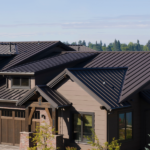Your roof is one of the most crucial components of your home, protecting you and your belongings from the elements year-round. However, neglecting its maintenance can lead to costly repairs and even compromise the safety of your household. To ensure your roof stays in top condition, here are six essential maintenance tips every homeowner should know.

1. Regular Inspections Are Key
Keeping a close eye on your roof’s condition is paramount. Schedule regular inspections with professional roofing contractors at least twice a year, ideally in the spring and fall, to catch any issues early. Look for signs of damage such as cracked or missing shingles, sagging areas, or water stains on the ceiling. Addressing problems promptly can prevent them from escalating into more significant issues.
- During your inspections, pay close attention to the condition of your shingles. Look for signs of wear such as curling, cracking, or missing pieces. These issues can compromise your roof’s ability to repel water, leading to leaks and water damage.
- Inspect flashing around chimneys, vents, and skylights for signs of damage or deterioration. Damaged flashing can allow water to seep into your home, causing rot and mold growth.
2. Keep Gutters Clean and Clear
Clogged gutters can cause water to accumulate on your roof, leading to leaks, mold growth, and even structural damage. Make it a habit to clean your gutters regularly, especially after heavy storms or during the fall when leaves are prone to falling. Ensure downspouts are free from debris and direct water away from your home’s foundation.
- In addition to leaves and debris, be on the lookout for granules from your shingles accumulating in the gutters. Excessive granule loss can indicate shingle deterioration and may warrant further inspection by a professional.
- Consider installing gutter guards to help prevent debris buildup and reduce the frequency of gutter cleaning. However, it’s essential to inspect and clean gutter guards periodically to ensure they’re functioning correctly.
- If you notice any leaks or damage to your gutters during your inspections, repair them promptly to prevent water from seeping into your home’s foundation and causing structural issues.
3. Trim Overhanging Branches
Trees near your home can provide shade and enhance curb appeal, but overhanging branches pose a risk to your roof. Branches rubbing against shingles can cause abrasion and damage over time while falling limbs during storms can cause significant harm. Trim back branches that are within six feet of your roof to prevent potential damage.
4. Address Moss and Algae Growth
Moss and algae can thrive in damp, shaded areas of your roof, compromising its integrity over time. Use a solution of water and bleach to remove moss and algae growth, taking care to apply it safely and thoroughly rinse afterward. Additionally, installing zinc or copper strips along the ridge of your roof can help prevent future growth.
- While bleach can effectively kill moss and algae, consider using eco-friendly alternatives such as oxygen bleach or commercial roof cleaners. These options are gentler on the environment and less likely to cause damage to your roof’s surface.
- To prevent future moss and algae growth, trim back overhanging branches to allow more sunlight to reach your roof. Sunlight inhibits the growth of moss and algae by drying out moisture and creating an inhospitable environment for spores to thrive.
- If moss or algae growth persists despite your efforts, consult with a professional roofing contractor. They can recommend specialized treatments or coatings designed to inhibit growth and protect your roof’s surface.
Related Posts
5. Ensure Proper Ventilation
Adequate ventilation is essential for maintaining a healthy roof and prolonging its lifespan. Poor ventilation can lead to excess heat and moisture buildup in your attic, which can cause shingles to deteriorate prematurely and promote mold growth. Check that vents are unobstructed and consider installing additional vents if needed to improve airflow.

6. Schedule Professional Maintenance
While DIY maintenance tasks are essential, some aspects of roof care are best left to professionals. Schedule annual inspections with a qualified roofing contractor to assess your roof’s condition thoroughly. They can identify potential issues, perform necessary repairs, and provide expert advice on prolonging your roof’s lifespan.
By following these six essential tips, you can ensure your roof remains in optimal condition, providing reliable protection for your home and family for years to come. Don’t overlook the importance of regular inspections, gutter maintenance, tree trimming, addressing moss and algae growth, ensuring proper ventilation, and scheduling professional maintenance. Investing in your roof’s upkeep now can prevent costly repairs and extend its lifespan, ultimately safeguarding your biggest investment – your home.





